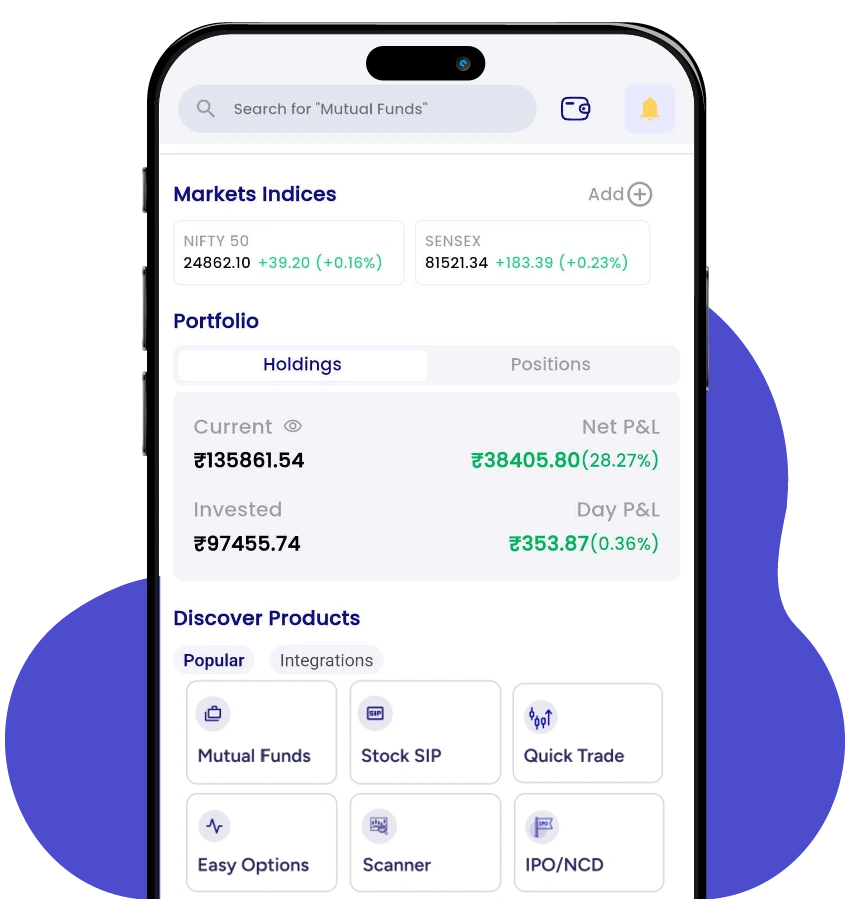What is Put Writing?
- 24th July 2025
- 10:30 AM
- 7 min read
If you are an option trader constantly battling time decay or waiting for a clear trend that never comes, you are not alone. Many traders face this challenge, especially when markets move sideways.
But what if you could turn that stagnation into steady income? That is where put writing comes in, a strategic move to earn a premium while waiting on the sidelines. Hence, no wonder that over 11 million Indian traders explored derivatives, such as futures and options, in FY25, according to SEBI.
Read this blog and learn about writing or selling a put option in detail.
What is Put Writing in the Stock Market?
As a stock market investor or trader, you can earn income through options trading, particularly by selling put contracts and collecting premiums. This strategy is used when you believe the price of the underlying asset will remain stable or rise.
Put sellers, also known as put writers, set a strike price and expiration date when creating the contract. If the asset’s price stays above the strike price and the option expires unexercised, you keep the premium received; this is referred to as your ‘yield.’ Essentially, it is a way to generate profit upfront, provided market conditions align with your expectations.
Detailed Breakdown of the Put Writing Process
Understanding how to write put options helps investors generate income, but it also comes with downside risk. Here is how this process works:
-
Select the Underlying Asset and its Outlook
First, you must choose a specific index or stocks and gather a good understanding of their fundamentals and market outlook. Suppose you speculate that the stock of company ABC will continue trading at INR 150 and will not decline below its strike price, or it will grow. Hence, you can choose such an underlying asset and perform a put writing on it.
-
Select an Expiration Date and a Strike Price
Now, you must choose a strike price that is lower than the current market price. Also, you must choose an expiry date that aligns with your put writing strategy. Continuing the example, stocks of ABC remain stable until next month. You choose a strike price of INR 140 with expiry in the next month, balancing a decent premium with manageable risks.
-
Selling the Put Option
You can place a sell order of your chosen put option by stating the quantity in the form of lots, order type, price, and expiry. Suppose the buyer pays you a premium of INR 10 for a lot of 100 shares; your premium becomes INR 1,000 from one lot.
-
Monitor the Market
If the stock price remains equal to or above the INR 140 (the strike price), the option is rendered worthless, and you can retain the premium. If the price falls below the strike price and trades at INR 130, you still must buy at INR 140, making a loss of INR 10 per share, but you can still offset the cost by the premium value.
How Does Put Writing in Options Trading Benefit You?
Here is how put writing helps in income generation with flexible strategies and controlled risks:
-
Flexibility in Put Writing Strategy
Now that you know the put writing meaning, you know that traders can select a strike price and expiry date, adjusting with the evolving market conditions. Traders look for a bullish market sentiment to sell put options, indicating a flexibility in this strategy.
-
Risk Management
It acts as a hedging tool, meaning you can use it as insurance for your investments against potential price decline of asset prices, providing downside protection for your current market position.
-
Income Generation
With put writing, you can enjoy a steady profit in the form of premiums. Unless an underlying asset trades below the strike price, you can keep this profit and generate a revenue flow in a bullish market. Looking at the current statistics, India accounts for about 60% of global derivative volume, signifying its potential for income generation.
You can enjoy these benefits by investing in derivatives with PL Capital Group – Prabhudas Lilladher. Download the PL Capital app and start investing today!
3 Obligations of Put Writers Must Fulfil
-
Obligation to Purchase
By now, you have an understanding of what is put writing, and you also noted that selling a put option is beneficial. This is applicable when stock prices remain the same or above the strike price. You are obligated to buy assets at your set strike price, even if it is currently trading below the strike price.
-
Maintenance of margin
While performing a put writing or put selling, you must fulfil the margin requirement with your broker. If the market volatility is high or the asset prices fall, this required margin also increases and may call for additional funds.
-
Abide by the Agreement
Regardless of the market condition, as a put seller, you must respect the provisions mentioned in the put contract. For example, if you refer to the NSE guidelines, the set penalty for margin violation is 0.07% per day for the first instance, and the amount increases with continuous violations.
Conclusion
If you are participating in derivative trading, you must learn the put writing method to earn profit in the form of premiums. Especially useful in a bullish market, if you speculate on the price movement of an underlying asset correctly and it moves higher than the strike price, you can sell and earn a premium as a profit.
With the PL Capital app, you can invest in derivatives, stocks, mutual funds, and more using its user-friendly and feature-packed interface. Download the PL Capital app today!
FAQ’s
1. How does put writing generate income?
As a put writer, when you sell or write an option, you receive income in the form of a premium. Suppose the asset prices stay above the strike price and the option buyer does not exercise their rights. Then, you earn the premium as a profit. Even if the buyer purchases the asset, you can still offset the purchase cost with the received premium.
2. How would you write a put option?
You must choose an underlying asset, set a strike price and an expiry date. In addition, speculated that the prices would go either above the strike price or remain the same. After setting such parameters, you can write or sell a put option on the asset and receive an upfront premium.
3. Can you exit a put writing position before expiration?
Yes, you can exit a position of put writing by ordering a buy-back on those options you sold. However, be mindful that prices for buying back those assets will depend on the market conditions. It also depends on the time till the expiration of the contract.





